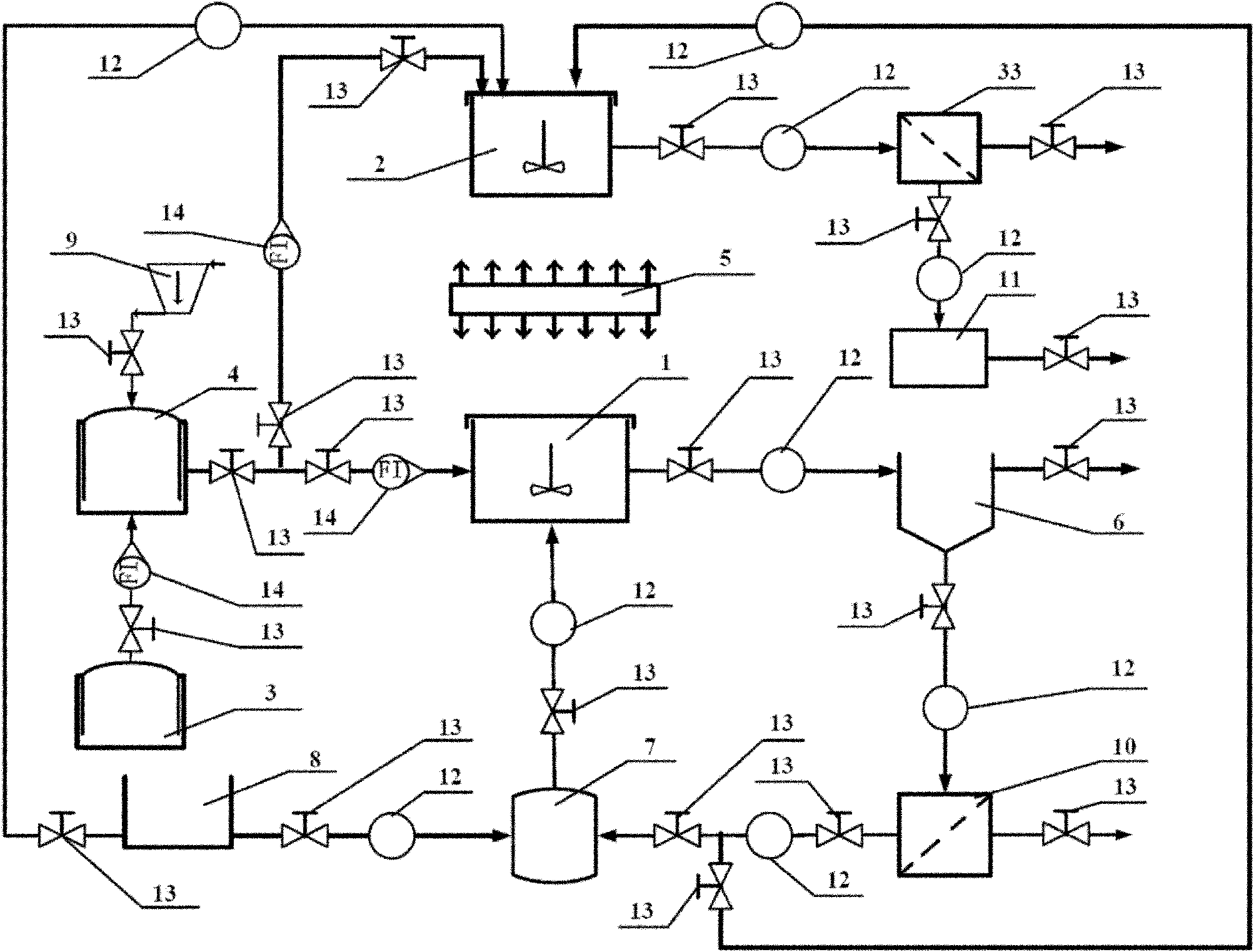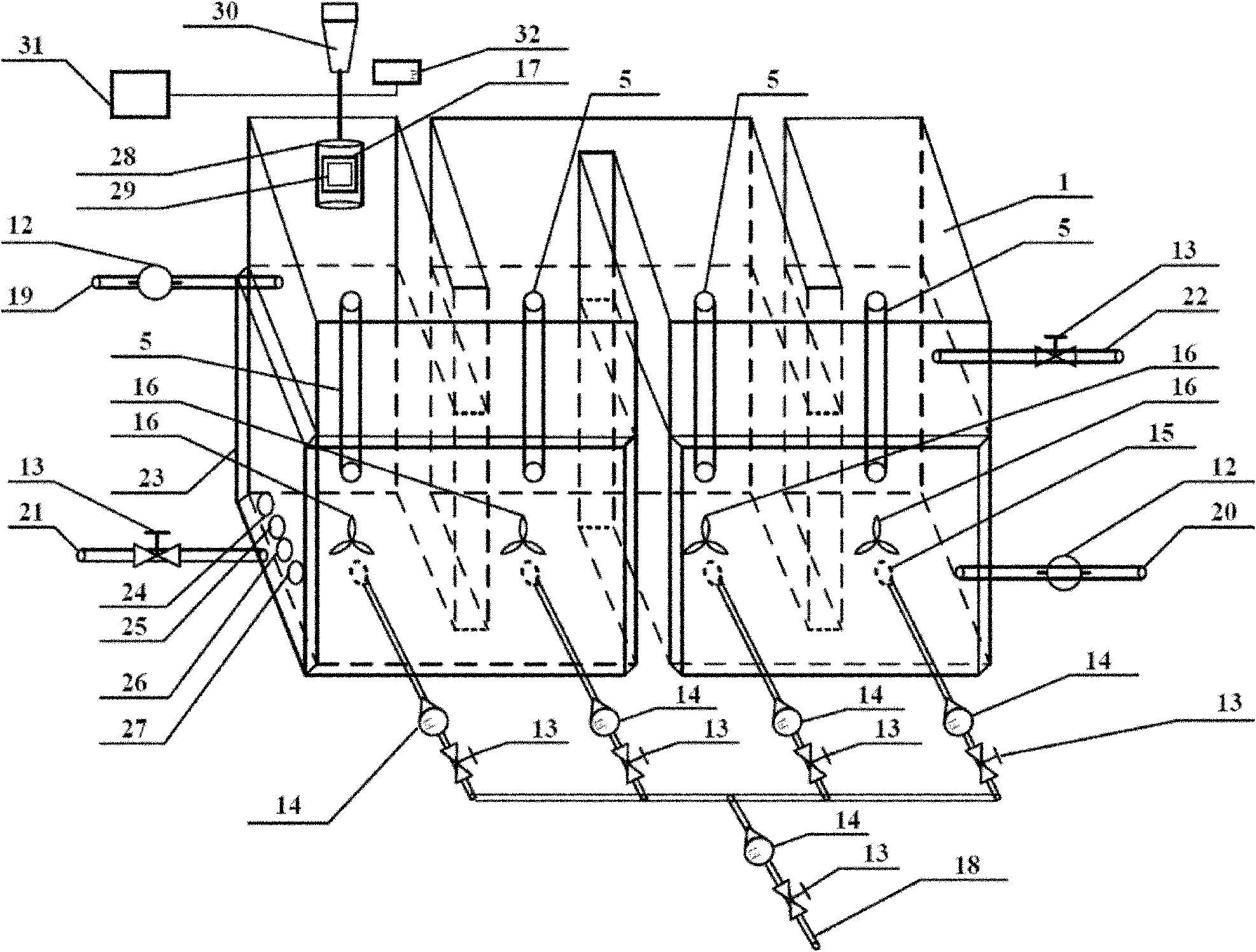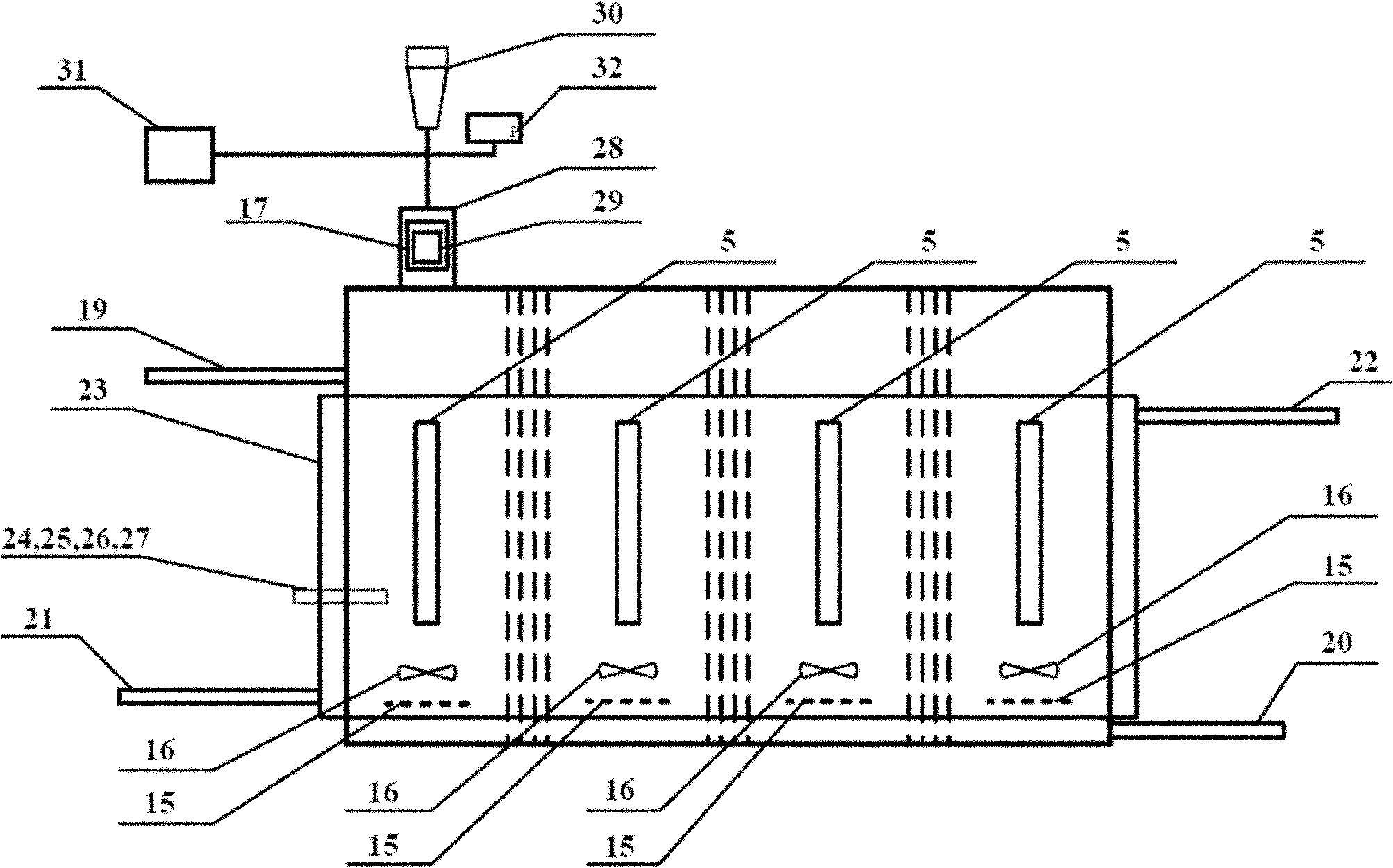System for treating sewage and producing biological oil by using microalgae and method
A bio-oil and sewage technology, applied in the fields of energy and wastewater treatment, chemical instruments and methods, biological water/sewage treatment, etc., can solve the problems of limited development of photobioreactors, achieve an excellent algal cell growth environment, good effect, well-structured effect
- Summary
- Abstract
- Description
- Claims
- Application Information
AI Technical Summary
Problems solved by technology
Method used
Image
Examples
Embodiment 1
[0080] The f / 2 medium (pH 7.0) common to green algae was used for the seed liquid culture in the shake flask, and the sewage medium (pH 7.0) was used for both the seed tank culture and the photobioreactor 1 culture. Sewage culture medium is the secondary effluent of municipal sewage and industrial sewage treated by sewage treatment plant after filtering and removing impurities or algae (total nitrogen is 30.0-50.0mg / L, ammonia nitrogen is 10.0-16.0mg / L, total phosphorus The culture medium formed with a concentration of 2.0 to 4.0 mg / L) is added to the photobioreactor 1 through the feeding port / inoculation port 19 and sterilized, and the initial seeding density is 6.0×10 7 cfu / ml, stirring speed is 120rpm, light intensity is 15000lux, light cycle is 16h:8h, culture temperature is 30℃, pH is 7.0, CO 2 gas CO 2 The concentration is 30% (v / v), and the ventilation rate is 0.1VVm. Before dividing the culture, the algae concentration in the photobioreactor 1 is as high as 2.0×10 aft...
Embodiment 2
[0084]The continuous fermentation method is adopted and the municipal sewage and industrial sewage after filtering and removing impurities or algae are the secondary effluent treated by the sewage treatment plant as the medium, and the medium is inoculated with Chlorella C9-JN2010. The contact density is 3.5×10 7 cfu / ml, the light cycle is 14h:10h, the light intensity is 5000 lux, the culture temperature is 25°C, the pH is 8.5, and the CO 2 gas CO 2 Concentration of 25.0% (v / v), ventilation volume of 0.2VVm, continuous culture for 480h, nitrogen and phosphorus removal effect, CO 2 See the relationship between the conversion rate (%(v / v)) and oil accumulation of Figures 7A-7B shown.
[0085] Depend on Figure 7A The analysis shows that in the early stage of continuous culture, with the extension of culture time, its effect on nitrogen, phosphorus and CO 2 utilization is accelerated. The utilization rate of nitrogen was accelerated in 0~120h, and then the removal rate rea...
Embodiment 3
[0088] The batch fermentation method is adopted and the municipal sewage and industrial sewage after filtering and removing impurities or algae are the secondary effluent of the sewage treatment plant as the culture medium, and the culture medium is inoculated with Chlorella C9-JN2010. Density is 1.0×10 7 cfu / ml, the light cycle is 10h:14h, the light intensity is 7500 lux, the culture temperature is 20 °C, the pH is 6.5, and the CO 2 The concentration of 15.0% (v / v), the ventilation rate of 0.01VVm, batch culture for 480h, nitrogen and phosphorus removal effect, CO 2 See the relationship between the conversion rate (%(v / v)) and oil accumulation of Figures 8A-8B shown.
[0089] Depend on Figure 8A The analysis shows that in the early stage of cultivation, with the extension of cultivation time, its effect on nitrogen, phosphorus and CO 2 utilization is accelerated. In 0-168h, the nitrogen utilization rate was accelerated and the removal rate was as high as 98.0% (W), and...
PUM
 Login to View More
Login to View More Abstract
Description
Claims
Application Information
 Login to View More
Login to View More - R&D
- Intellectual Property
- Life Sciences
- Materials
- Tech Scout
- Unparalleled Data Quality
- Higher Quality Content
- 60% Fewer Hallucinations
Browse by: Latest US Patents, China's latest patents, Technical Efficacy Thesaurus, Application Domain, Technology Topic, Popular Technical Reports.
© 2025 PatSnap. All rights reserved.Legal|Privacy policy|Modern Slavery Act Transparency Statement|Sitemap|About US| Contact US: help@patsnap.com



